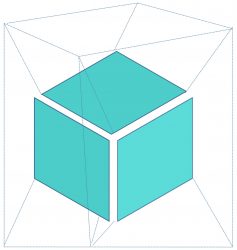Climate change has a severe impact on sustainable food production. The OECD reports annually on the evolution of volumes of production and monitors the resources and subsidies allocated to the agricultural sector of the economy. The sector and the whole nutrition chain are frequently perceived as a major driver of shrinkflation, greedflation and cheatflation.
Changes need to be introduced with a medium and long-term perspective in order to allow for smooth adaptations of the sectors involved and to avoid so-called hog cycles.
Most economic debate is focused on the quantity of production. The loss of production due to climate change and Russia’s war in Ukraine has been and continues to be substantial causing starvation and premature deaths. Another issue is the lower quality of food due to droughts. Repeated events call for adaptations. Certainly the adaptation of more resistant crops is part of the answer. However, the other side of the same coin consists in the consumer’s readiness to buy products that suffered during a drought. Just as the reduction of fertilizers and less water in the production of droughts reduces the size of fruit, for example, we, the consumers will be systematically challenged in our purchasing habits of fresh food.
Price-sensitive consumers will have to choose the products that have reduced prices due to drought quality loss. Other consumers may choose the drought affected product if a “resilience message” is attached to such products. Solidarity with climate affected farmers, just like bio-farmers’ products in ecological production, opens up another perspective to more sustainable consumption and farming. 
Socioeconomic Circularity
Some sectors of the economy receive a lot of attention, for example sectors selling fancy cars. Other sectors, like the ones regrouped under the name of circular economy, receive much less attention and show up little in headlines. In fact, the circular economy is a great example of this. There are thousands of waste and rubbish collection, sorting and recycling centers, several hundreds of waste-to-energy plants, composting sites across the European Union. Of course, there is also a European Federation of the sector (FEAD). On the last FEAD conference in Brussels 2024 it became clear that Europe is finally waking up to the challenge of recycling costly raw materials.
The narrative concerning the sector needs to change further: what used to be subsumed as costly nuisance is in fact a potential profit center for companies and society at large. We do no longer want to import lots of raw materials from countries with dubious social and environmental records as part of our supply chains for raw materials. Time to act. This, however, is a rather complex socioeconomic challenge of circularity. The price mechanisms are not fully functional in most Member States, let alone across the EU. Additionally, the social practice to recycle varies greatly between countries. Distributional issues matter as well. It is rather obvious that dumping waste from one region/country in another one has huge implications (nuclear waste), but if one country values waste more than another one, due to innovative recycling techniques, the matter takes a marketable turn. Regulation should carefully distinguish categories of materials as we do for hazardous materials in production, consumption and for health and safety purposes of employees.
Metal, battery, cement, plastic and wood recycling pose challenges, but also opportunities to improve the European material import/export balance sheets. However, first in the circle of circularity is the use of materials. There we are clear that “less is better”. Less input of raw materials, most of which we import in the EU, reduces our dependence on other countries. This is the tricky social question of circularity. Mainstreaming of more conscious use and reuse of resources is a huge social issue, which we tend to relegate to a task for the education system. The awareness that supposed waste is also a valuable resource is spreading and the growth of the sector a business and employment opportunity for many. Circularity is the new sexy sector of the 21st century.
What have you recycled today? and myself? Well, scientific online publications. Now think of ChatGPT and the AI gold mines of 2024. There is lots of value in recycling.
(Image FEAD conference Brussels, 2024) 

